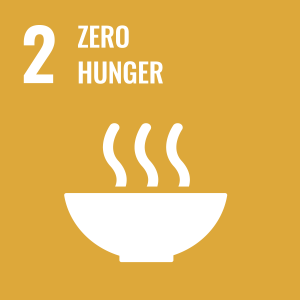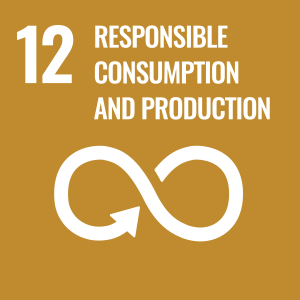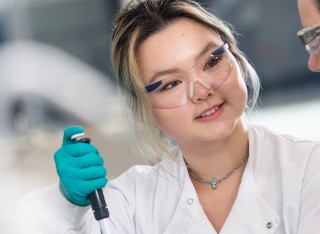
Dr Jonathan Brown
About
University roles and responsibilities
- Professional Training Year Tutor for Food Science and Nutrition students
- Professional Training and Careers Committee
- Division of Nutritional Sciences Postgraduate Mentor
- Member of the Board of Studies
- Member of the Undergraduate Exam Boards
My qualifications
Previous roles
Affiliations and memberships
Previous duties
- Nutrition Working Party Chair 2006-2008
- Member of the FHMS Festival and Seminar Committee 2004-2006
- Organiser of the SBMS/FHMS Post-grad Poster Show 2004-2007
- Member of the Postgraduate Liaison Committee 2004-2008
- SBMS Disability Co-ordinator 2001
News
In the media
ResearchResearch interests
Polyphenols in health and disease
- Absorption and metabolism of (poly)phenols
- The role phytoestrogens in breast cancer
- The role of phytoestrogens in bone health
- Protective effects of (poly)phenols against UVA irradiation in biological systems
- (Poly)phenolic compound identification and quantitation in foods and beverages
- Antioxidant and metal chelation properties of polyphenols
- Glycaemic index and the role of polyphenols
- Herbs, their constituents and properties as antioxidants/antioxidants/cellular protective agents
Research collaborations
- Dr Don Clarke, Central Science Laboratory, York
- Professor Gary Williamson, University of Leeds
- Professor Mike Clifford, University of Surrey
- Barbara Parry, WINS research team, Winchester and Eastleigh Healthcare NHS Trust
- Dr Valeria Rizzo, University of Catania, Italy
- Professor Samir Khoja, King Abdula-Aziz University, Saudi Arabia
- Dr Sue Lanham-New, University of Surrey
Indicators of esteem
£500,000 research income.
Research interests
Polyphenols in health and disease
- Absorption and metabolism of (poly)phenols
- The role phytoestrogens in breast cancer
- The role of phytoestrogens in bone health
- Protective effects of (poly)phenols against UVA irradiation in biological systems
- (Poly)phenolic compound identification and quantitation in foods and beverages
- Antioxidant and metal chelation properties of polyphenols
- Glycaemic index and the role of polyphenols
- Herbs, their constituents and properties as antioxidants/antioxidants/cellular protective agents
Research collaborations
- Dr Don Clarke, Central Science Laboratory, York
- Professor Gary Williamson, University of Leeds
- Professor Mike Clifford, University of Surrey
- Barbara Parry, WINS research team, Winchester and Eastleigh Healthcare NHS Trust
- Dr Valeria Rizzo, University of Catania, Italy
- Professor Samir Khoja, King Abdula-Aziz University, Saudi Arabia
- Dr Sue Lanham-New, University of Surrey
Indicators of esteem
£500,000 research income.
Supervision
Completed postgraduate research projects I have supervised
PhD students
6 successfully completed; 3 currently active in their studies; 2 commencing soon (as of July 2009)
MSc students
8 successfully completed; one currently active in their studies (as of July 2009)
Teaching
- BMS1013 Food Science - lectures on the rancidity process, phytonutrients
- BMS2015 Food Science - lectures on food colours (e.g. anthocyanins, carotenoids, chlorophylls, haem pigments) and fruit ripening and storage methods
- BMS2016 Food Analysis - use of infrared in food analysis
- BMS2017 Practical Food Analysis - six practicals concerned with the analysis of sugars, starches, lipids and caffeine in food stuffs
- BMS2018 Key Skills 2 - assessment and feedback on student presentations from Nutrition and Nutrition/Food Science students
- BMS3021 Food Safety - lectures on nitrites, nitrates and nitrosamines
- BMS3022 Food Chemistry (module coordinator) - lectures on nitrate/nitrite, sulphites, phenols and polyphenols (5 lectures), antioxidants in foods and supplements, antioxidant methods
- BMS3023 Food Quality Assurance - lectures on carbohydrate, fat and vitamin analysis in foods
- BMS3024 Food Technology (module coordinator) - lectures on heat processing methods and newer methods of food processing (e.g. high pressure and pulsed electric fields), drying, evaporation and calculations related to processes
- MSc Nutritional Medicine module on Antioxidants, Phytoprotectants and Disease - lectures on anthocyanins and lignans as well as project student supervision
- MSc Clinical Biochemistry and Molecular Biology (Project student supervision)
Sustainable development goals
My research interests are related to the following:






Publications
Highlights
Papers
Al-Mssallem, M., Frost G., Hampton S. and Brown J.E. (2010) A study of Hassawi rice (Oryza sativa L.) in terms of its carbohydrate hydrolysis in vitro and glycaemic and insulinaemic indices in vivo. (submitted to EJCN)
Rizzo, V., Clifford, M.N. and Brown, J.E. (2010) The effects of processing on polyphenol and phenolic acid content and antioxidant activity of semi-dried cherry tomatoes (Lycopersicon esculentum M.) (in preparation)
Jamil, D.M., Howell, N.K. and Brown, J.E. (2010) Protection of low density lipoprotein from copper-mediated oxidation by the volatile oils of Thymus Syriacus Boiss. var syriacus and Thymbra spicata L. and their primary constituents (in preparation)
Jamil, D.M., Brown, J.E., Driscoll, D. and Howell, N.K. (2010) Characterization of the volatile oil content and composition of Thymus Syriacus Boiss. var syriacus and Thymbra spicata L. by gas chromatography (GC) and GC-mass spectrometry (in preparation)
Stoupi, S., Williamson, G., Viton F., Barron D., King, L.J. Brown, J.E. and Clifford M.N. (2010) In vivo bioavailability, absorption, excretion and pharmacokinetics of [14C] procyanidin in male rats. Drug Metabolism and Disposition, 38(2), 287-291
Brown, J.E. and Kelly M.F. (2008) Influence of dietary cholesterol and stress on the metabolism of linoleic acid: Δ6-desaturase activity vs. product precursor ratios. International Journal of Food Safety, Nutrition and Public Health 1: 5-15
Gannon, R.H.T., Millward D.J., Brown J.E., MacDonald H.M., Lovell D.P., Frasetto L.A., Remer T. and Lanham-New S.A. (2008) Estimates of net acid excretion (NAEind) and net rate of endogenous non-carbonic acid production (NEAP) in the elderly UK population: analysis of the National Diet and Nutrition Survey (NDNS) of British adults aged 65 years and over. British Journal of Nutrition 100:615-623
Rahimuddin, S.A., Khoja, S.M., Zuhair, M.M., Howell N.K. and Brown, J.E. (2007) Inhibition of lipid peroxidation in UVA-treated skin fibroblasts by luteolin and its glucosides. European Journal of Lipid Science Technology 109 (7): 647-655
Brown, J.E. and Kelly M.F. (2007) Inhibition of lipid peroxidation by anthocyanins, anthocyanidins and phenolic degradation products. European Journal of Lipid Science Technology 109 (1):66-71
Cassidy A., Brown J.E., Hawdon, A., Faughnan M.S., King L.J., Millward J., Zimmer-Nechemias L., Wolfe B. and Setchell K.D.R. (2006) Factors affecting the bioavailability of soy isoflavones in humans after ingestion of physiologically relevant levels from different soy foods. Journal of Nutrition 136:45-51
Clifford, M.N. and Brown J.E. (2006) Dietary flavonoids and health - broadening the perspective in - Flavonoids: Chemistry, Biochemistry and Application, Edited by Andersen and Markham CRC Press. pp 320-370
Harmer J. and Brown J.E. (2005) Properties of cyanidin-3-glucoside and malvidin-3-glucoside in relation to their ability to prevent low density lipoprotein oxidation at physiological concentrations. Nutrition and Health Current Topics IV, Edited by T. Carr and K. Descheemaeker, Garant Publishers pp. 167-168
Brown J.E. (2005) A critical review of methods used to estimate linoleic acid Δ6-desaturation ex vivo and in vivo. European Journal of Lipid Science Technology 107 (2):119-134
Faughnan M.S., Hawdon A., Ah-Singh E., Brown J.E., Millward D.J. and Cassidy A. (2004) Urinary isoflavone kinetics: the effect of age, gender, food matrix and chemical composition. British Journal of Nutrition 91 (4): 567-574
Au A., and Brown J.E. (2002) The role of glycosylation on the antioxidant properties of polyphenols. Free Radical Biology and Medicine 33 (S1) S198
Tyrrell R.M., Pourzand C.A., Brown J.E., Hejmadi V., Kvam E., Ryter S. and Watkin R.D. (2000) Cellular studies with UVA radiation: A role for iron. Radiation Protection Dosimetry 91 (1-3): 37-39
Brown J.E., Lindsay, R.M. and Riemersma, R.A.(2000) Linoleic acid metabolism in the spontaneously diabetic rat. Δ6-desaturase activity vs. product precursor ratios. Lipids 35 (12) 1319-1323
Shafi, S., Welzel, D., Weidinger, G., Brown J.E. and Born G.V. (2000) Effect of reserpine treatment on low-density lipoproteins in arterial wall and internal organs of rats. Journal of Cardiovascular Pharmacology 35:686-92.
Collins, A.R., Brown, J.E., Bogdanov, M., Cadet, J., Cooke, M., Douki, T., Dunster, C., Eakins, J., Epe, B., Evans, M., Farmer, P., Gedik, C.M., Halliwell, B., Herbert, K., Hofer, T., Hutchinson, R., Jenner, A., Jones, G.D.D., Kasai, H., Kelly, F., Lloret, A., Loft, S., Lunec, J., McEwan, M., Moller, L., Olinki, R., Podmore, I., Poulsen, H., Ravanat, J-L., Rees, J.F., Reetz, F., Shertzer, B., Spiegelhalder, B., Turesky, R., Tyrrell, R., Vina, J., Vinicombe, D., Weimann, A., de Wergifosse, B. and Woods, S.G. (2000) Comparison of different methods of measuring 8-oxoguanine as a marker of oxidative DNA damage. Free Radical Research 32, 333-341.
Pourzand C., Watkin R.D., Brown, J.E. and Tyrrell, R.M. (1999) Ultraviolet A radiation induces immediate release of iron in human skin fibroblasts: The role of ferritin. Proceedings of the National Academy of Sciences, USA 96:6751-6756.
Brown, J.E. and Rice-Evans, C.A. (1998) Luteolin-rich artichoke extract protects low-density lipoprotein from oxidation in vitro. Free Radical Research 29:247-255.
Brown, J.E., Khodr, H., Hider, R.C. and Rice-Evans, C.A. (1998) Structural-dependence of flavonoid interactions with copper ions: Implications for their antioxidant properties. Biochemical Journal 330:1173-1178.
Riemersma, R.A., Perkins, D., Brown, A.J. and Brown, J.E. (1994) Linoleic acid and coronary artery disease. American Journal of Clinical Nutrition 59:949-950.
Brown, J.E. and Riemersma, R.A. (1994) Effect of dietary cholesterol on delta-6-desaturase. Scottish Medical Journal 39:61.
Scott, N.A., Jennings, P.E., Brown, J.E. and Belch, J.J.F. (1991) Gliclazide: a general free radical scavenger. European Journal of Pharmacology 208:175-177.
Brown, J.E. and Wahle, K.W.J. (1990) Effect of fish oil and vitamin E supplementation on lipid peroxidation and whole blood aggregation in man. Clinica Chimica Acta 193:147-156.
Wahle, K.W.J. and Brown, J.E. (1990) Plasma lipid peroxidation and platelet aggregation during high intakes of fish oil fatty acids. Fett Wissenschaft Technologie 92:326-330.
Brown, J.E. and Wahle, K.W.J. (1989) Fish oil supplements, lipid peroxidation and platelet aggregation in man. Biochemical Society Transactions 17:493.
Collins, M.D., Brown, J.E. and Jones, D. (1988) Brachybacterium faecium gen. nov. sp. nov., a Coryneform bacterium from poultry deep litter. International Journal of Systematic Bacteriology 38:45-48.
Abstracts (posters and oral presentations)
Wahle K.W.J. and Brown, J.E. (1989) Plasma lipid peroxidation and vitamin E supplementation during high intakes of fish oil. In: Vitamin E symposium, Bochum, West Germany.
Brown, J.E., Jennings, P.E., Bridges, A.B., Scott, N. and Belch, J.J.F. (1990) Atherosclerosis, diabetes and free radicals. In: Abstracts of the 635th Meeting of the Biochemical Society, Aberdeen, Scotland.
Jankowski, J., Bridges, A., Scott, N., Brown, J.E. and Belch J.J.F. (1990) Circulating free radicals and peptic ulcer disease. Gut 31 (10) A1183-A1183.
Brown, J.E. and Riemersma, R.A. (1992) Coronary heart disease and Δ6-desaturase: Methodological aspects of Δ6-desaturase measurement. Scottish Lipid Discussion Group Meeting, Glasgow, Scotland, UK.
Brown, J.E. and Riemersma, R.A. (1993) The effects of dietary cholesterol and isolation stress on Δ6-desaturase in the rat. Scottish Lipid Discussion Group Meeting, St. Andrews, Scotland, UK.
Brown, J.E. and Riemersma, R.A. (1993) Effect of dietary cholesterol on Δ6-desaturase. Scottish Society for Experimental Medicine, Edinburgh, Scotland, UK.
Brown, J.E., Lindsay, R.M. and Riemersma, R.A. (1993) Altered Δ6-desaturase activity and fatty acid composition in liver and plasma in the spontaneously diabetic BB rat. International Society for the Study of Fatty Acids and Lipids, Lugano, Switzerland.
Brown, J.E., Lindsay, R.M. Baird, J.D., Riemersma, R.A. (1996) Reduced Δ6-desaturation of linoleic acid in insulin treated BB diabetic rats. British Diabetic Association - Medical and Scientific Section Spring Meeting, Dublin, Ireland.
Brown, J.E. and Rice-Evans, C. (1996) Flavonoid structure and antioxidant activity. VIII Biennial Meeting of the International for Free Radical Research, Barcelona, Spain.
Paganga, G., Brown, J.E. and Rice-Evans, C. (1996) Simultaneous determination of the major families of polyphenolic compounds in vegetables by HPLC. VIII Biennial Meeting of the International for Free Radical Research, Barcelona, Spain.
Brown, J.E. (1997) Structure-antioxidant activity relationships of flavonoids. Mini-Symposium on Phytoprotectants. The Rank Prize Funds, Grasmere, England.
Brown, J.E., Khodr, H., Hider, R.C., Rice-Evans, C.A. (1998) Structural dependence of flavonoid interactions with Cu(II) ions: Implications for their antioxidant properties. World Congress of the Oxygen Club of California: Oxidants and Antioxidants in Biology, Santa Barbara, CA, USA.
Brown, J.E. and Rice-Evans, C.A. (1999) Artichoke extract protects LDL from oxidation. Meeting of the Society of Medicinal Plant Research, Amsterdam, The Netherlands.
Brown, J.E. and Rice-Evans C.A. (2000) Structural determinants of antioxidant activities in anthocyanidins. Meeting of the Society for Free Radical Research, Liverpool, England.
Tyrrell, R.M, Pourzand, C.A., Brown J.E., Hejmadi, V., Kvam E., Ryter, S. and Watkin R. (2000) Iron and heme release as key factors in the response of skin cells to UVA radiation. World Congress of the Oxygen Club of California: Oxidants and Antioxidants in Biology, Santa Barbara, CA, USA.
Brown, J.E. (2001) Flavonoids - A natural class of metal chelators relevant to health. London's Chemistry, London, England.
Au, A and Brown, J.E. (2002) The role of glycosylation on the antioxidant properties of polyphenols. XIth Meeting of the Society for Free Radical Research International, Paris, France
Harmer, J. and Brown, J.E. (2003) Properties of cyanidin-3-O-glucoside and malvidin 3-O-glucoside in relation to their ability to prevent LDL oxidation at physiological concentrations. 4th Nutrition and Health Conference, London, UK.
Harmer, J. and Brown J.E. (2004) The modulation of anthocyanin antioxidant activity by albumin. Summer Meeting of the Society for Free Radical Research Europe, Lodz, Poland.
Rahimuddin, S., Brown, J.E., Howell N.K. and Khoja, S.M. (2004) Effect of Luteolin and its glucosides on the prevention of UVA-induced oxidative damage in human skin fibroblasts. The Second Saudi Science Conference, Jeddah, Saudi Arabia.
Brown, J.E. (2004) The effect of physiologically relevant concentrations of dietary anthocyanins on their ability to prevent LDL oxidation in the presence and absence of serum albumin. Nutrition Society Annual Summer Meeting, Dublin, Ireland.
Rahimuddin, S., Brown, J.E., Howell N.K. and Khoja, S.M. (2004) Effect of Luteolin and its glucosides on the prevention of UVA-induced oxidative damage in human skin fibroblasts. SBMS Festival of Research, University of Surrey, Guildford, UK.
Parry B.M., Brown J.E., S.M. Horton, J.M. Stilwell, D.B. Clarke, J.M. Lawrence, M. Raats, L. Storey and R.M. Rainsbury. (2005) Investigation of the phytoestrogen intake of group of postmenopausal women previously treated for breast cancer. Food Standards Agency Meeting, Gatwick, UK.
Stoupi S., Clifford M.N., Kuhnert N., Brown J.E. and Williamson G. (2006) Gut flora metabolism of flavan-3-ols. SBMS Festival of Research, University of Surrey, Guildford, UK.
Parry B.M., Brown J.E., S.M. Horton, J.M. Stilwell, D.B. Clarke, J.M. Lawrence, M. Raats, L. Storey and R.M. Rainsbury. (2006) Investigation of the phytoestrogen intake of group of postmenopausal women previously treated for breast cancer. Food Standards Agency Meeting, Slaley Hall, Hexham, UK.
Brown, J.E., J.W. Tong, B.M. Parry, S.M. Horton, J.M. Stilwell, D.B. Clarke, J.M. Lawrence, M. Raats, L. Storey and R.M. Rainsbury. (2006) Creation of a new phytoestrogen database for the assessment of dietary intakes of isoflavones, coumestans and lignans in a group of postmenopausal women previously treated for breast cancer. Soy and Health Conference, Düsseldorf, Germany.
Parry B.M., Brown J.E., S.M. Horton, J.M. Stilwell, D.B. Clarke, J.M. Lawrence, M. Raats, L. Storey and R.M. Rainsbury. (2007) Investigation of the phytoestrogen intake of group of postmenopausal women previously treated for breast cancer. Food Standards Agency Meeting, Slaley Hall, Hexham, UK.
Brown J.E., K. Chana, C. Mahende. (2007) Differences in the absorption and excretion of soy milk isoflavones in Oriental and Caucasian men. Nutrition Society Annual Meeting, Coleraine, N. Ireland
Stoupi S., Clifford M.N., Williamson G and Brown J.E. (2007) Gut flora metabolism of (-)epicatechin. SBMS Festival of Research, University of Surrey, Guildford, UK.
Jamil D., Brown J.E., Driscoll D., Howell N. (2007) Gas chromatographic (GC) and GC-MS analysis of volatile oil components of Thymbra spicata L. and Thymus syriaca Boiss. var syriaca. SBMS Festival of Research, University of Surrey, Guildford, UK.
Parry B.M., Lawrence J.M., Storey L., Brown J.E., Clarke D.B., Raats M., Horton S.M., Stilwell J.M., and Rainsbury R.M. (2007) Food choice and phytoestrogen consumption in women previously treated for post-menopausal breast cancer. WCRF and AICR Second Expert Launch Conference, Washington DC, USA.
Brown J.E., K. Chana, C. Mahende. (2007) Absorption and excretion of soy milk isoflavones differs between Oriental and Caucasian men. University of Surrey Festival of Research, November 2007, Guildford, Surrey, UK
Stoupi, S., Clifford, M.N., Williamson, G. and Brown, J.E. (2007) A comparison of the biotransformation of procyanidin B2 and (-)epicatechin by human colonic bacteria. 3rd International Conference on Polyphenols and Health, Kyoto, Japan.
Parry B.M., Lawrence J.M., Storey L., Brown J.E., Clarke D.B., Raats M., Horton S.M., Stilwell J.M., and Rainsbury R.M. (2008) Food choice and phytoestrogen consumption in women previously treated for post-menopausal breast cancer. Breast Cancer Research 2008, The Royal Society, London, UK.
Jamil D., Brown J.E., Driscoll D. Howell N.K. (2008) Composition and antioxidant properties of thyme and thymbra. FHMS Festival of Research, University of Surrey, Guildford, UK.
Mssallem-Al M, Driscoll D., Frost G., and Brown J.E. (2008) Carbohydrate bioavailability in vitro and in vivo. FHMS Festival of Research, University of Surrey, Guildford. UK.
Stoupi, S., Williamson G., Drynan J.W., Brown J.E., and Clifford M.N. (2008) A comparison of the biotransformation of (-)-epicatechin and procyanidin B2 by human colonic bacteria. FHMS Festival of Research, University of Surrey, Guildford. UK.
Brown, J.E., Cropp, E., Rizzo, V. (2009) Carotenoid content and antioxidant activity of fourteen tomato ketchups available in the UK. FHMS Festival of Research, University of Surrey, Guildford. UK.
Al-Mssallem, M., Frost G., Hampton S. and Brown J.E. (2009) A study of Hassawi rice in terms of its carbohydrate hydrolysis in vitro and glycaemic and insulinaemic indices in vivo. FHMS Festival of Research, University of Surrey, Guildford. UK.
Al-Mssallem, M., Frost G. and Brown J.E. (2009) Compositional analysis of Hassawi rice (Oryza sativa L.) and its associated glycaemic and insulinaemic indices. Nutrition Society Annual Meeting, Guildford, Surrey, UK.
Brown, J.E., Cropp, E. and Rizzo, V. (2009) Carotenoid content and antioxidant activity of fourteen tomato ketchups available in the UK. Nutrition Society Annual Meeting, Guildford, Surrey, UK.
Jamil, D.M., Brown J.E., Driscoll, D. and Howell, NK. (2009) Characterization and antioxidant activity of the volatile oils of Thymus Syriacus Boiss. var syriacus and Thymbra spicata L. grown wild in Kurdistan-Iraq. Nutrition Society Annual Meeting, Guildford, Surrey, UK.
Background/Objectives: A high prevalence of Type 2 diabetes exists in Saudi Arabia. Epidemiological evidence suggests that low glycaemic index (GI) diets reduce diabetes risk. Yet, little is known about the GI of traditional Saudi Arabian staples such as Hassawi rice (HR). HR was evaluated in terms of its GI and insulinaemic indices (II). Comparisons were made in vitro assessing glucose released enzymatically. A long grain rice variety available in both the UK and Saudi was studied as a comparison. Subjects/Methods: For GI and II measurements, HR, Uncle Ben’s rice (UBR) and a standard glucose solution were consumed by healthy subjects (n=13) on 7 randomised occasions. Capillary bloods were collected at specific times over 2 h after food intake. FAO/WHO protocols were employed to determine GI and II. For the in vitro studies, cooked rice was incubated with hydrolytic enzymes under standardised conditions. Samples were taken at t=20 & t=120 min and rapidly available glucose (RAG) and slowly available glucose (SAG) were computed. Results: Values of RAG and SAG were lower for HR compared to their respective values for UBR (p0.05) despite a lower insulin response noted for HR (p=0.007). Conclusions: HR had a similar GI to UBR although a lower insulin response was evident. RAG and SAG values were different for the two rice varieties despite similar GI values. These differences may be important in terms of their metabolic impact and outcome on diabetes.
Urinary isoflavone excretion is used to monitor compliance and examine biological effects. The present study determined if there were alterations in urinary isoflavone excretion following the ingestion of different soya foods and if age and gender potentially modified profiles. Twenty premenopausal women, seventeen post-menopausal women and twenty men received a defined single oral bolus dose (0·44 mg isoflavones/kg body weight) of soya milk, textured vegetable protein (TVP) or tempeh on three separate occasions. Baseline and four consecutive complete 24 h pooled urines were collected during each period. Urinary genistein recovery was influenced by gender and food matrix. For women the urinary genistein recovery was higher following soya-milk consumption compared with TVP (P
Increased postprandial glycaemia and reduced insulin sensitivity are associated with development of Type 2 Diabetes (T2D). Maintaining a normal glucose response is important both for healthy individuals, for disease prevention, and for those with T2D, to prevent development of diabetes-related complications. Chilling previously-cooked starchy carbohydrate (CHO) results in retrogradation of some of the starch to form resistant starch (RS). RS is not absorbed in the small intestine and consequently does not contribute to the postprandial glucose excursion. Reheating the CHO, however, reverses this process, reducing some of the RS content. RS type 5 is formed in the laboratory by heating starch with free fatty acids; there is limited evidence for its formation using domestic cooking methods and real foods. Furthermore it is unclear whether this would translate into a noticeable effect on postprandial glucose metabolism. In this randomised crossover study, 8 participants attended two study days; at one they consumed a freshly cooked mashed potato meal (203 g boiled potato, 25 g butter) at the other they consumed an identical meal which had been chilled for 66 h then microwave reheated. The potatoes were intrinsically labelled with [U-13C]starch, and participants received a variable [6,6-2H2]glucose infusion, allowing detailed glucose flux modelling. Venous blood samples were taken for 6 h postprandially. There was no significant effect on postprandial glucose, however repeated measures ANOVA on postprandial insulin time-point data found a significant difference between meals (p = 0.026), with a 24% reduction in incremental area under the curve (0–120 min) and 21% reduction in insulin peak between freshly cooked and reheated meals. There were no significant effects on rate of appearance of glucose into the plasma from the gut (Ra) or on endogenous (hepatic) glucose production (EGP), however there was a strong trend for a reduced rate of glucose disposal (uptake into tissues, Rd) following the reheated meal (p = 0.054). It is hypothesised that RS was formed in the reheated meal by the chilling and reheating process; this will be verified by in vitro work later in the project. The attenuation of the postprandial insulin response with no significant effect on EGP suggests enhanced hepatic insulin sensitivity following the reheated meal as a possible mechanism for the effects of RS on postprandial glycaemia. This study demonstrates that making simple changes to the way a starchy carbohydrate meal is prepared can have significant beneficial effects on postprandial glucose metabolism.
This pilot study investigated the effects of chilling and reheating a pasta-based meal on the postprandial glycaemic response. In this single-blind crossover study, 10 healthy volunteers consumed identical pasta meals (pasta, olive oil and tomato sauce), served either freshly prepared, chilled or chilled/reheated, on three separate randomised occasions. Capillary blood samples were taken for two hours postprandially. A significant difference in glucose Incremental Area Under the Curve (IAUC) was observed (p = 0.006), with the greatest difference observed between the freshly cooked and chilled/reheated meals (p = 0.041). Significant differences in incremental peak glucose were also observed (p = 0.018). These results suggest that making simple changes to domestic food processing methods can reduce the glycaemic excursion following a pasta meal, with the potential for health benefit.
Background/Objectives: A high prevalence of Type 2 diabetes exists in Saudi Arabia. Epidemiological evidence suggests that low glycaemic index (GI) diets reduce diabetes risk. Yet, little is known about the GI of traditional Saudi Arabian staples such as Hassawi rice (HR). HR was evaluated in terms of its GI and insulinaemic indices (II). Comparisons were made in vitro assessing glucose released enzymatically. A long grain rice variety available in both the UK and Saudi was studied as a comparison. Subjects/Methods: For GI and II measurements, HR, Uncle Ben’s rice (UBR) and a standard glucose solution were consumed by healthy subjects (n=13) on 7 randomised occasions. Capillary bloods were collected at specific times over 2 h after food intake. FAO/WHO protocols were employed to determine GI and II. For the in vitro studies, cooked rice was incubated with hydrolytic enzymes under standardised conditions. Samples were taken at t=20 & t=120 min and rapidly available glucose (RAG) and slowly available glucose (SAG) were computed. Results: Values of RAG and SAG were lower for HR compared to their respective values for UBR (p0.05) despite a lower insulin response noted for HR (p=0.007). Conclusions: HR had a similar GI to UBR although a lower insulin response was evident. RAG and SAG values were different for the two rice varieties despite similar GI values. These differences may be important in terms of their metabolic impact and outcome on diabetes.
Resistant starch (RS) is classed as a dietary fiber and does not contribute to the postprandial glucose excursion. Two types may be formed during food processing: RS3 when a starchy carbohydrate cools; RS5 when starch is heated in the presence of lipid. It is unknown whether RS5 can be produced under domestic cooking conditions or whether different fat types would affect the amount formed. Nor is it known whether sufficient RS3 remains after a chilled meal is reheated to have a significant impact on the postprandial glucose response. The aim of this study was to determine if different solid fat spreads (of varying fatty acid composition) incorporated into a mashed potato meal, served either freshly cooked or chilled and reheated, would produce different effects on the postprandial glucose and insulin responses. Ten healthy adults (age: 29 ± 5 y; BMI: 21.7 ± 2.6 kg/m2) attended six study days in a randomized crossover design. On each day, they consumed mashed potatoes (203 g) prepared with one of three solid fat spreads (butter, sunflower oil, olive oil, each providing 20 g fat). Each meal was consumed freshly cooked or microwave-reheated (after two days refrigeration at 4°C). Capillary blood samples were taken for 180 min postprandially. Plasma glucose and insulin were measured by glucose-oxidase method and ELISA respectively. Glucose incremental area under the curve (IAUC) was significantly lower for the reheated meal with butter, compared to the equivalent freshly cooked meal (P = 0.030). Insulinogenic Index (IGI), a surrogate measure of first phase insulin response, was significantly lower for the freshly cooked butter meal in comparison with the reheated equivalent (P = 0.031). There were no other differences between meals, either for fat type or preparation method. Differences in RS formation may explain these results; work is underway to measure both total RS and RS5. Other possible explanations are differences in effects on glucose absorption, such as via delayed gastric emptying. Whilst a beneficial effect on postprandial glucose and IGI was observed for the reheated butter meal, in comparison to the freshly cooked, it should be remembered that butter contains saturated fat, which has detrimental effects on blood lipids and should only be consumed in moderation. Biotechnology and Biological Sciences Research Council, UK.
Objectives: To determine whether the glycemic index (GI) and insulinemic index (II) of dates could be altered by Arabic coffee consumption. Methods: This randomized cross-over study was conducted at the Department of Nutritional Sciences, Faculty of Health and Medical Sciences, University of Surrey, Guildford, United Kingdom from November 2009 to February 2010. Healthy subjects (5 males, 5 females) were recruited to the study. They were fed Khulas dates either with water, or with Arabic coffee. Plasma glucose and insulin responses were measured using standardized methods. Responses were compared with a pure glucose solution matched for available carbohydrate. The GI and II were calculated using standardized methods, and results were presented as means and standard error of mean. Glucose and insulin responses were compared using repeated measures analysis of variance. Results: The GI of dates was 55 ± 6, which increased to 63 ± 5 for dates consumed with Arabic coffee (p=0.08). No significant difference was observed between the II for dates, and the II of dates consumed with Arabic coffee (p=1.00). Conclusion: Arabic coffee consumption modestly increased the plasma glucose response of dates compared to that of dates consumed with water. Insulin levels were not significantly affected. The modestly higher glycemic response to dates in the presence of Arabic coffee indicates that this custom may be considered detrimental to health.




